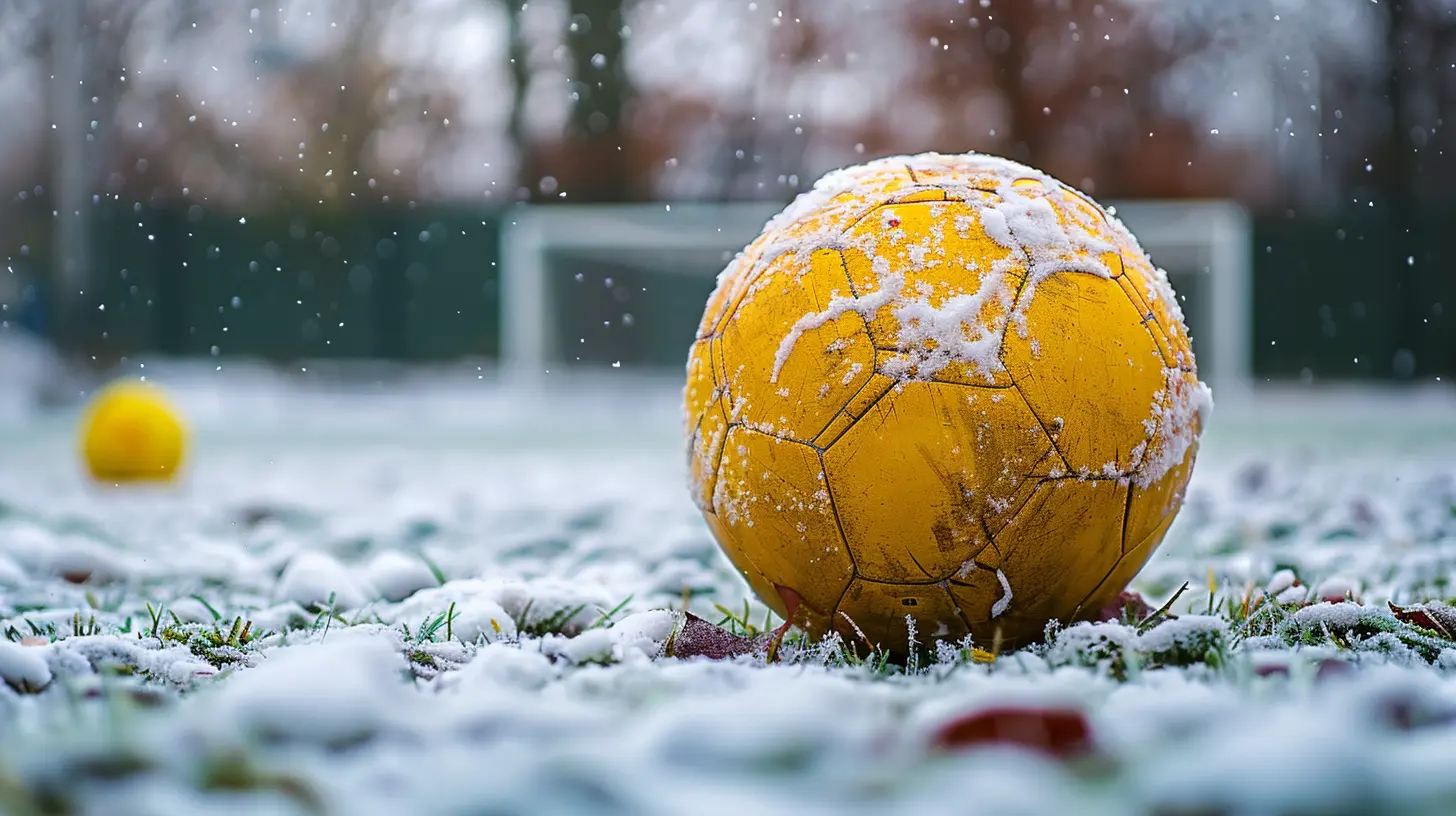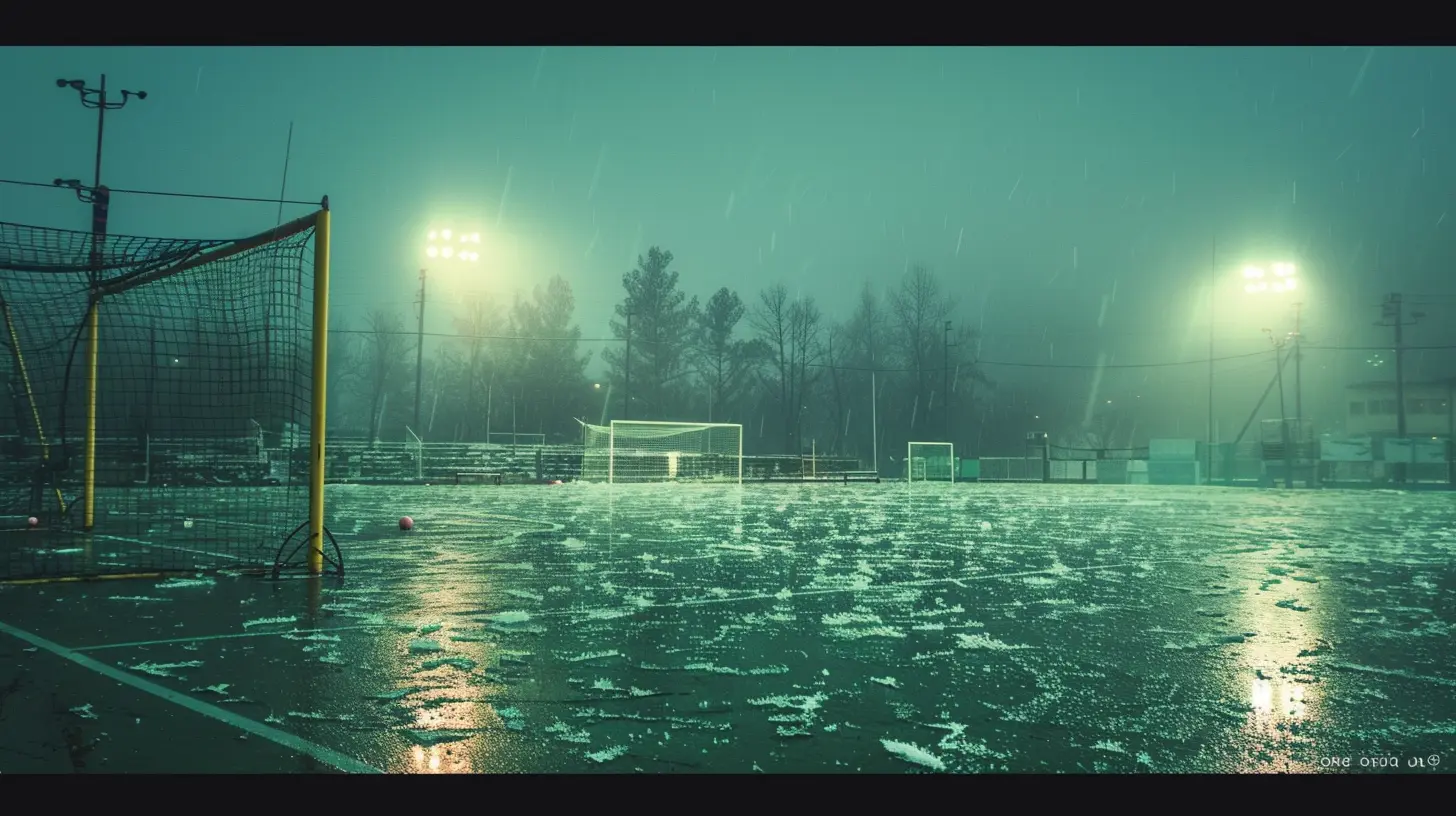How Weather Conditions Affect the Outcome of Soccer Matches
1 August 2025
When it comes to soccer, skill, strategy, and teamwork are often the first things that come to mind. But what about the weather? Yes, you read that right! Weather conditions can play a massive role in the outcome of a soccer match. Whether it’s scorching heat, torrential rain, or bone-chilling cold, Mother Nature can heavily influence how the game unfolds.
Ever wondered why some teams struggle in certain weather conditions while others thrive? Let’s break it down and see how different weather conditions impact soccer matches. 
1. Rain: The Great Equalizer
Rain can completely change the dynamics of a soccer match. A dry and well-maintained pitch allows for fast, precise passing and quick footwork. But throw in some heavy rain, and suddenly, the ball moves unpredictably, players slip, and tactical play is thrown into chaos.How Rain Affects Gameplay:
- Slower Ball Movement: Rain makes the pitch slick, slowing the ball down and making accurate passes harder.- Reduced Traction: Players struggle to maintain balance, leading to more slips and falls.
- Defensive Mistakes: Wet conditions increase the chances of defenders misjudging tackles or goalkeepers mishandling the ball.
- Advantage for Physical Teams: Teams that rely on strength rather than technical skill often benefit, as the sloppy surface hinders intricate passing plays.
Some teams love the rain—especially those that play a more physical, long-ball style of football. Others, particularly teams that thrive on possession-based play, can struggle to impose their usual dominance. 
2. Extreme Heat: The Endurance Test
Summer matches can be brutal, especially when temperatures soar above 30°C (86°F). Playing under such conditions feels like running a marathon in a sauna—exhausting and draining.Impact of High Temperatures on Matches:
- Faster Fatigue: Hot weather increases dehydration, making players tire more quickly.- Slower Tempo: Teams often play at a reduced pace to conserve energy.
- Frequent Breaks: Water breaks become essential, disrupting the flow of the game.
- Impact on High-Pressing Teams: Teams that rely on high-intensity pressing may struggle to maintain their usual playing style.
Countries like Spain and Brazil, used to playing in warmer conditions, often adapt better to the heat. Meanwhile, teams from colder regions may find themselves struggling to keep up. 
3. Cold Weather: A Test of Toughness
Cold weather, especially during winter months, presents a whole different challenge. Whether it's near-freezing temperatures or full-on snowstorms, the cold can impact everything from muscle function to ball control.Challenges Posed by Cold Temperatures:
- Stiff Muscles: Cold weather increases the risk of muscle strains and injuries.- Harder Playing Surface: Frozen pitches can make ball control more difficult.
- Increased Fatigue: The body works harder to stay warm, requiring extra energy.
- Advantage for Physically Strong Teams: Strength-based teams tend to perform better in harsh conditions.
Snow-covered pitches can turn matches into survival contests, where skill takes a backseat and physical resilience becomes the key factor. 
4. Windy Conditions: The Unpredictable Factor
Strong winds can make a seemingly normal game feel like an unpredictable adventure. Wind doesn’t just affect the ball—it alters how every pass, shot, and cross behaves.How Wind Changes Soccer Matches:
- Ball Swerving Unpredictably: Crosses and long balls become harder to control.- Difficult Aerial Play: Goalkeepers struggle to judge the ball’s movement in the air.
- Increased Importance of Short Passes: Teams relying on long balls may need to adjust their strategy.
- Shooting Becomes a Gamble: A shot that looks perfect might suddenly curve wide due to wind gusts.
Teams that excel in passing and close-controlled dribbling usually find it easier to adjust their gameplay in windy conditions.
5. Humidity: The Silent Opponent
Humidity is often overlooked, but it can be just as impactful as heat. High humidity levels make it harder for players to cool down, leading to faster exhaustion.Effects of Humidity on Players:
- Reduced Stamina: Players sweat more, leading to quicker dehydration.- Slower Recovery: The body takes longer to regain energy.
- Tempo Management Becomes Key: Teams need to balance aggressive play with energy conservation.
Matches played in humid regions, like South America and Southeast Asia, often witness teams struggling with endurance, especially during the latter stages of the game.
6. Altitude: The Invisible Challenge
While not exactly a weather condition, altitude can have a drastic effect on a match’s outcome. Playing at high altitudes, such as in cities like La Paz (Bolivia), can be a nightmare for teams not used to the thin air.Effects of High Altitude on Performance:
- Oxygen Deficiency: Players experience difficulty breathing, affecting stamina.- Faster Fatigue: Sprints and high-intensity runs become harder.
- Home Advantage: Teams accustomed to high-altitude conditions have a significant edge over visitors.
Even the world’s best teams have struggled at high altitudes, proving that environmental factors can sometimes be just as crucial as tactics.
Which Weather Conditions Favor Which Teams?
Every team adapts differently to weather conditions based on their style of play.- Possession-based teams (like Barcelona or Manchester City) prefer dry conditions where their passing game can flourish.
- Physical teams (like Burnley or Atletico Madrid) often thrive in rain and cold, using their strength to overpower the opposition.
- Counter-attacking teams love a fast playing surface, while teams that rely on aerial duels might struggle in strong winds.
Knowing how certain teams perform under different weather conditions can sometimes help predict match outcomes.
Can Weather Decide a Champion?
Absolutely! Just look at major tournaments like the World Cup or Champions League. Teams traveling across different climates often struggle to maintain peak performance.Throughout soccer history, we've seen shocking upsets heavily influenced by the weather. A fast, attacking team used to warm climates may suddenly find themselves struggling on a cold, rainy night in England—something many top teams have learned the hard way.
Final Thoughts
Weather conditions might not always be the first thing fans think about when predicting a game, but they can be just as influential as tactics and player form. From rain-soaked pitches to scorching summer heat, Mother Nature can throw some serious curveballs (or should we say, unexpected bounces) into the mix.The next time you watch a soccer game, take a moment to check the weather—it might just give you a hint about what’s to come!
all images in this post were generated using AI tools
Category:
SoccerAuthor:

Fernando Franklin
Discussion
rate this article
1 comments
Brittany Wolfe
Weather can be a game-changer in soccer, influencing player stamina, ball movement, and overall strategy. Teams must adapt quickly to succeed under varying conditions.
August 9, 2025 at 4:08 AM

Fernando Franklin
Absolutely! Weather significantly impacts gameplay, requiring teams to adjust their strategies and adapt to conditions for optimal performance.


